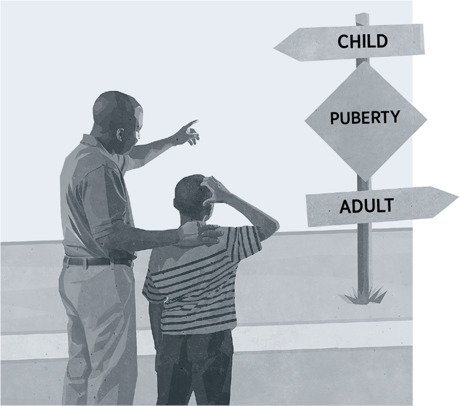THE CHALLENGE
It
seems as if it were just yesterday that you held your infant in your arms. Now
you have a preteen on your hands—still a child, true, but one who may be about
to embark on that section of road toward adulthood called puberty.
How
can you help your son or daughter deal with this confusing and sometimes
traumatic transition into sexual maturity?
WHAT YOU SHOULD KNOW
Puberty
has its own timetable. It can
begin as early as age eight or as late as the mid-teens. “The range of normal
puberty is wide,” says the book Letting Go With Love and Confidence.
Puberty
can bring insecurity. Adolescents
can be highly sensitive about how they come across to others. Suddenly they
become conscious of how they looked and act, wondering if it is weird.
Self-confidence can plummet even further if acne develops. Many feel their face
is under attack! Crying and saying they are ugly.
Early
bloomers face special challenges. This
is particularly true of girls, as they might be teased when they develop
breasts or curves. They’re also at risk of attracting the attention of older
boys who are more apt to be sexually experienced.
Puberty
does not mean maturity. A young
person may look grown-up, but that tells you nothing about his ability to make
intelligent decisions, behave responsibly, exercise self-control, or [display]
other measures of maturity.
WHAT YOU CAN DO
Talk
about puberty before it starts. Let
your child know what to expect, especially regarding menstruation (for girls)
and nocturnal emissions (for boys). Different from the gradual changes of
puberty, those events begin suddenly and can be confusing and even frightening.
While discussing such matters, take a positive approach—that puberty initiates
a beneficial makeover that paves the way for adulthood.
Be
thorough. Most parents feel uncomfortable
discussing sexual related matters with their children. Growing up I had similar
experience. As awkward as it may be, talk to your child about all aspects of
puberty.
Ask
questions that invite conversation. To
break the ice, talk about others’ experiences with puberty. For example, you
could ask your daughter, “Have any of your classmates started talking about
having periods yet?” “Do kids make fun of girls who develop early?” You could
ask your son, “Do kids ridicule those who lag behind in physical development?”
When adolescents start talking about how puberty affects others, it might be
easier for them to open up about their own feelings and experiences. “Be quick
to listen, slow to speak.”
Help
your adolescent develop “practical wisdom and thinking ability.” Puberty is not all about physical and emotional changes.
During this stage your adolescent also develops reasoning skills that will help
him or her make good decisions in adulthood. Take advantage of this opportunity
to instill good values in your adolescent.
Do
not give up. Many young people seem reluctant to
talk to their parents about puberty, but do not be fooled. “The adolescent who
pretends to be uninterested, bored, disgusted, or stone deaf may be memorizing
every word.”
